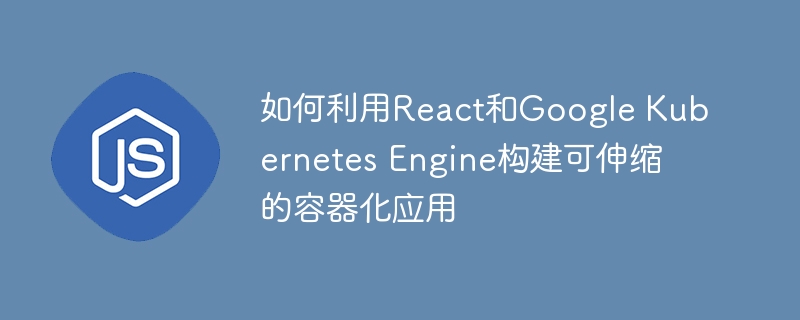Home >Web Front-end >JS Tutorial >How to build scalable containerized applications with React and Google Kubernetes Engine
How to build scalable containerized applications with React and Google Kubernetes Engine
- PHPzOriginal
- 2023-09-27 14:30:581122browse

How to build scalable containerized applications using React and Google Kubernetes Engine
Introduction:
With the development of cloud computing and containerization technology, building scalable containerized applications Scalable applications are becoming increasingly important. React, as a popular front-end framework, can provide flexible user interface. Google Kubernetes Engine (GKE) is a powerful container orchestration platform that can help us manage and expand containerized applications. This article will introduce how to combine React and GKE to build scalable containerized applications, and provide specific code examples.
Main body:
1. Create a React application
First, we need to create a React application as our front-end interface. You can use create-react-app to quickly build a React project. Run the following command in the command line:
npx create-react-app react-app cd react-app npm start
This will create a new project called react-app and start the development server.
2. Dockerize the React application
Next, we will package the React application into a Docker image for deployment and expansion on GKE. Create a file named Dockerfile in the root directory of the React application with the following content:
# 使用官方的node镜像作为基础 FROM node:14-alpine # 指定工作目录 WORKDIR /app # 将package.json和package-lock.json复制到工作目录 COPY package*.json ./ # 安装依赖 RUN npm install # 将所有文件复制到工作目录 COPY . . # 打包React应用 RUN npm run build # 指定运行时命令 CMD [ "npm", "run", "start" ]
Then run the following command in the command line to build the Docker image:
docker build -t my-react-app .
3. Deploy to GKE
Next, we will deploy our application on Google Kubernetes Engine. First, make sure you have the Google Cloud SDK installed and set up. Then, run the following command in the command line to create a new GKE cluster:
gcloud container clusters create my-cluster --num-nodes=2
This will create a cluster named my-cluster and run on two nodes.
Then, we need to upload the local Docker image to Google Container Registry (GCR). Run the following command from the command line:
gcloud builds submit --tag gcr.io/[PROJECT_ID]/my-react-app
Replace [PROJECT_ID] with your project ID.
Finally, we can use the kubectl command to deploy our application:
kubectl create deployment my-react-app --image gcr.io/[PROJECT_ID]/my-react-app
4. Horizontal expansion
Through GKE, we can easily achieve horizontal expansion of the application. We can use the kubectl command to adjust the number of replicas of the application:
kubectl scale deployment/my-react-app --replicas=3
This will run three replicas in the cluster, thereby increasing the capacity and reliability of the application.
Conclusion:
By combining React and Google Kubernetes Engine, we can build scalable containerized applications. Use React to provide a flexible user interface and GKE to manage and scale containerized applications. Hopefully the code examples provided in this article will help you quickly get started building scalable applications. I wish you success!
The above is the detailed content of How to build scalable containerized applications with React and Google Kubernetes Engine. For more information, please follow other related articles on the PHP Chinese website!

